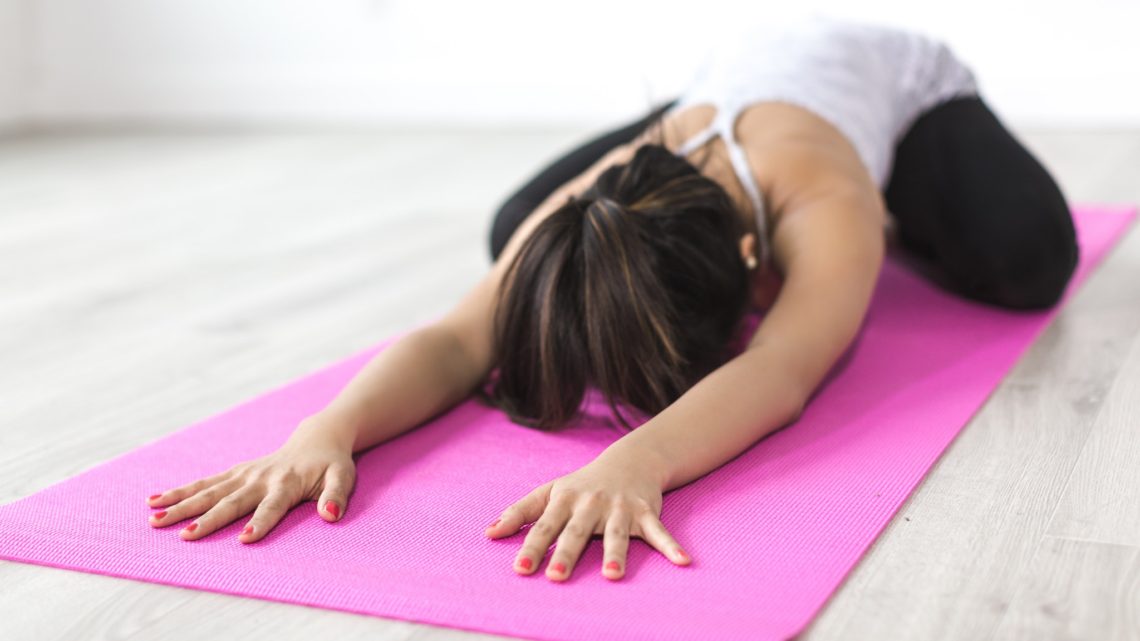When I started practicing yoga, I didn’t consider Restorative Yoga classes as something worth my time and money. I opted for Ashtanga Yoga and was sure that the more physically demanding the practice is the better.
Many years have passed by…
… and today, I believe that Restorative Yoga is the most impactful style of yoga I’ve ever tried (and, believe me, I’ve tried a lot).
Popularized by Judith Hanson Lasater, Restorative (or Gentle) Yoga is an internal practice that not only teaches us to support the body in long holds but also develops deeper self-awareness through numerous reflections.
Restorative yoga is a yoga style using props like blankets, bolsters, and blocks to help you support the poses for long periods of times – for about 8-10 minutes.
Also, yoga is known as a high-yield and relatively low-risk way of complex health improvement.
Want to find out about the benefits of Restorative Yoga?
Scroll down & keep reading!
Benefits of gentle yoga
- Relieves the pain
- Makes you more limber and flexible
- Mind relaxation (conscious and intentional)
- Improves the night’s sleep
- Manages your emotional well-being & calms the nervous system
- Helps to recover from illnesses
- Releases physical tension (in muscles)
- Reduces anxiety & manages stress
- Restores bodily systems to optimal functioning
- Lessens fatigue
And now:
I want you to pay attention while I talk about a couple of the most controversial yet essential benefits of gentle yoga: losing body weight and preventing anxiety.
Restorative yoga for weight loss
It is scientifically-proven that Restorative Yoga helps with weight loss:
“…a study funded by National Institutes of Health (NIH) finds that restorative yoga burns subcutaneous fat in overweight women.”
One of the explanations, represented in the study is that Gentle Yoga reduces cortisol levels – the stress hormones, which rise when we get anxious and result in more abdominal fat.
Obviously,
It’s good news for people who can’t take up more aerobic styles of yoga due to their health conditions. For example, for overweight people too active classes can be challenging and intimidating. It is accessible for yogis of all levels of experience and all ages too.
So, Restorative Yoga is a perfect way to burn calories in a relaxed way and improve your mental well-being at the same time.
Restorative yoga for anxiety
Dealing with anxiety is not surprising for most people these days.
Unfortunately, living in our busy and hectic 21st century stresses out us so much that many just can’t cope with it on their own.
The research shows:
“…anxiety disorders are different from normal anxiety. They are the most common form of mental illness in the United States, affecting nearly 1 in 5 adults.”
The Anxiety and Depression Association of America say that they affect 40 million adults in the United States age 18 and older, or 18.1% of the population every year.
However, bearing these tendencies of today’s crazy lifestyle in mind, lots of coping mechanisms to handle stress have been developed:
- Exercising & sport
- Visualization
- Meditation
- Relaxation exercises, including restorative yoga & deep breathing
- Healthy diet
SO, how does restorative yoga help to cope with anxiety?
Experts concluded that:
“…By reducing perceived stress and anxiety, yoga appears to modulate stress response systems. This, in turn, decreases physiological arousal — for example, reducing the heart rate, lowering blood pressure, and easing respiration. There is also evidence that yoga practices help increase heart rate variability, an indicator of the body’s ability to respond to stress more flexibly.”
And indeed!
To check this information, I decided to track my heart rate and blood pressure before and after my gentle yoga class. And guess what? Both figures were lower when I finished the exercise.
As for me, the best poses in Restorative Yoga for anxiety are:
- Padangusthasana (Big Toe Pose)
- Baddha Konasana (Bound Angle Pose)
Also,
There are 3 main components of restorative yoga:
Observation
By practising your observation skills when holding poses on the mat for so long, you also learn to step back, breath out, and observe off the mat as well.
Support
When you manage to learn through restorative yoga how to support your physical body so that it can relax and let go, your mind learns how to do that too.
Compassion
Restorative yoga cultivates compassion for others and for yourself (which is more important). Thus, you gradually release your anxious mind from your internal critique.
Bottom line
No doubt, restorative yoga has more than the 10 benefits listed above. And I really hope I managed to convince you of this kind of yoga effectiveness too.
It truly allows us to exist in that space of doing nothing, while in reality doing very much for your mind and body. Weight loss, dealing with anxiety, easing stress… By sticking to this style of yoga you’ll get more benefits for your SELF than you even can imagine.
Please don’t forget to share this article with your friends and family. After all, sharing is caring. Thanks for reading, Francessa of http://thecrossfitshoes.com/.
Author: Francesca Russo
Written by Francesca Russo from http://thecrossfitshoes.com/.











